Capturing the residential solar opportunity - Learnings from leading solar-as-a-service players
Solar power: an imperative for reaching energy independence and net zero
As most European countries face both the effects of climate change and Russia’s invasion of Ukraine, the need to provide sufficient clean energy has become more evident than ever. As one of the critical pillars of the renewable energy transition, solar power is emerging as the cheapest energy source globally, accelerating widespread adoption across markets (1).
The year 2022 is set to become a record-breaking year for European solar power. According to data from Bloomberg (2), 99.4 terawatt hours (TWh) were generated by solar systems from May to August, up 28% from 2021. One can observe similar developments in Germany. By September alone, Germany generated over 51 TWh in 2022, surpassing the 2021 all-time high of 50 TWh in total annual solar-generated electricity (3). Among the three solar energy sectors (utility, commercial & industrial (C&I), and residential), the residential energy sector has become increasingly relevant.
How residential solar supports the transition towards a decarbonized future
Despite not being as cost-competitive as utility-scale and C&I solar systems, residential and C&I solar offers consumers the opportunity to accrue savings due to the reduction of electricity bills and simultaneously gives autonomy to the respective homeowner. European markets are growing quicker than ever, with the German rooftop solar sector totalling over ~2.200.000 solar systems in March of 2022, growing at ~10% year-over-year (4).
Given the direct effects of the energy crisis on consumers’ electricity bills and the announced policy support under the REPowerEU initiative, the trend of growing markets for rooftop solar energy has only amplified across Germany and Europe (5). To keep pace with this growing demand, solar installation businesses and – in particular – solar-as-a-service companies come into play.
Solar-as-a-Service companies have to be up to the challenge of rising demand
Over the past years, there has been an increase in players covering the entire value chain of a solar system, from lead generation to operations & maintenance over the project lifecycle. In many ways, this process is similar to that pursued by utility-scale developers.
This end-to-end approach – often characterized as rooftop “solar-as-a-service” – is beneficial both from a business and a consumer perspective. On the one hand, integrating all relevant steps along the value chain increases synergies while, on the other hand, making the offering for customers becomes less complex and price-competitive. The bilateral advantages of the solar-as-a-service approach make the market particularly appealing to us, having invested in Spanish-based Samara and Holaluz and Munich-based Voltaro, which focuses on C&I customers.
As more and more people start to embrace solar power and markets continue to grow and mature, solar-as-a-service businesses are faced with new supply- and demand-side challenges to which they need to adapt.
Customers become smarter, and preferences are changing as markets mature
In the same way that markets mature and companies’ offerings evolve, customers change too. Markets previously dominated by early adopters are moving towards “majority customer” markets. In growingly competitive and maturing European markets (e.g., Germany), customers are becoming smarter and more demanding of specific product features to make a purchase decision.
Proactively educating customers generates trust and competetive edge
Purchasing a solar system is a significant decision for mainstream customers due to its long life cycle, relative technical complexity, and the capital required to install it. To transition away from early adopters and arrive at mass adoption, it becomes crucial for market players to address their changing needs.
In a digital-first sales process, companies find success by educating customers and creating transparency around their offerings online to gain the customer’s trust. Customers are becoming increasingly savvy about the pros and cons of different offerings as they inform themselves through news outlets, online forums, and word-of-mouth. Measures such as online configurators – where customers can choose between offering specifications – are precious to customers. Such online sales tools convey that companies are transparent about the distinct features of their offering. Consequently, comprehensive online configurators are repeatedly praised by customers for providing them with the information they need to make an informed decision.
Introducing product innovation helps to address changing preferences
Companies in more mature markets, such as Germany and the U.S., are introducing product innovations, such as product bundling, additional financing structures, and ancillary products and services, to make their offering more appealing to the mainstream.
- Product bundling: most solar-as-a-service companies (for example, Sunrun) are starting to bundle a range of products – particularly solar PV, batteries, and EV chargers – as a combined offering to customers. This bundle becomes the new standard offering towards customers. Bundling multiple solutions and offering them to customers from a single source helps reduce complexity and creates cost synergies – such as lowering changeover costs – that further increase savings for the customer.
- Additional financing structures: to alleviate the high initial costs of installing solar, companies such as Otovo and Zolar promote leases at no upfront cost to customers. Typically, leasing increases the overall installation price for customers: whereas in Germany, 7kWp systems (a size typical for a single-family household) cost between 1.7-2.0€/Wp, leasing increases this price to around 3.50-4.60€/Wp. Consequently, leasing increases the break-even period and overall savings generated by the solar system. Although customers increasingly question the leasing model for its financial drawbacks, our analysis suggests that even with a leasing model, customers could save from day one if savings are passed on to the consumers. Additionally, leasing has the advantage that companies typically take care of system maintenance for free over its lifetime, which is not usually the case for purchased systems.
- Ancillary products & services: next to the aforementioned range of products, companies are starting to offer products and services that accelerate the full-scale electrification of homes. In particular, products such as heat pumps and energy management systems (see 1Komma5°) and services such as green electricity tariffs (see Enpal) and virtual power plants (see Sonnen & Tesla) are becoming more common. Integrating such products and services into the standard offering adds to the unique value proposition of end-to-end solar-as-a-service companies.
In combination, proactive customer education, transparent information and more compelling product offerings (such as leasing and product bundling) address the mainstream customer’s core needs. It reduces the perceived complexity of the offering, can lower the entry barrier and increase knowledge about rooftop solar. By tapping into those two channels, companies can more quickly convert leads to signed customers before doing technical work. However, this highly scalable digital process, which makes solar-as-a-service companies ideally positioned to prosper from increasing demand, opens up a potentially even more significant challenge: how to keep up with installations?
Installer operations are a fundamental differentiator in an increasingly digital industry
When looking at customer journeys of solar-as-a-service companies, there is an evident push for quick conversion of leads to signed customers. In most cases, this conversion takes place before a technician has checked the roof. This way, companies decrease the risk of customer attrition further along the customer journey.
Installers are the hidden champions of solar-as-a-service businesses
Whereas the digital sales process up to the point of conversion is trimmed for efficiency, customers primarily complain about a lack thereof in the subsequent process. Below, we listed some of the main issues customers face until the system go-live:
- Progressively longer lead times for eventual installations due to personnel and equipment shortages in times of high demand
- Short-term appointment cancellations & communication issues with installers
- Groundless & late rejections of installations that lead to contract termination
- Lack of transparency regarding installation status after signature
Since installers own the only physical touchpoint with the customer, companies in growing and progressively competitive markets need to focus especially on their installer operations and workforce. Doing so becomes crucial to maintain a healthy customer relationship and to convey a customer-centric brand.
Through remote workforce management software, companies can succeed by effectively managing the three-way communication between installers, customers, and sales personnel. Furthermore, offering applications where customers can track their project status can be beneficial to generate transparency until the system go-live and can simultaneously increase app users – for features such as monitoring and customer support – in the long run.
Companies are pursuing three approaches to increase installer capacity
Companies generally rely on both their own and third-party installers to cope with growing and fluctuating demand and reduce lead times. To increase installer capacity, companies take varying approaches.
Training own installers: first and foremost, there is a trend to build up own installer capacity by training new installers. Training own installers can be particularly appealing to companies as they can better influence how their installers interact with customers and thus consistently convey a customer-friendly experience. Additionally, utilizing their own installers cuts down a layer of margins, meaning companies can offer better prices to the end customer.
Acquiring installation businesses: as an addition and alternative to training their own workforce, companies such as 1Komma5° and incumbent energy suppliers such as EON find success by acquiring existing installation businesses. This capital-intensive approach helps increase installer capacity quickly and pressures competitors to keep pace in markets where installer capacity is becoming scarce.
Building platforms of third-party installers: lastly, companies are partnering up with existing installation businesses to increase capacity. Some players, such as Otovo, are pursuing a pure-play marketplace approach, relying solely on third-party installers. This approach offers installation businesses the opportunity to tap into the growing lead pipeline of solar-as-a-service companies while not having to focus on sales operations themselves. In combination with its own installers, having a platform of third-party installers gives companies additional flexibility in dealing with fluctuating demand.
As demand grows, solar-as-a-service companies must adapt to changing customers and increasing supply-side challenges. Acknowledging and developing installers as the core part of the solar-as-a-service business model while generating trust and transparency with the customer are becoming key differentiators in a maturing industry.
To learn more about investments in residential solar and other decarbonization technologies, visit our website and sign up for our newsletter. Feel free to reach out to us for further questions and comments to our authors: Dr. Benedikt von Bary, Sven-Christian Hörner.
Sources:
- Victoria Masterson (2021). Renewables were the world’s cheapest source of energy in 2020, new report shows. World Economic Forum. Link to source.
- Will Mathis (2022). Europe’s Summer of Record Saved Billions of Euros. Bloomberg Green. Link to source.
- Julian Wettengel (2022). Germany clinches solar power record already by mid-September. Clean Energy Wire. Link to source.
- Petra Franke (2022). Daten zum Ausbau der Photovoltaik in Deutschland (DE). Energie Zukunft. Link to source.
- Paul Gordon (2022). Ukraine war pushes demand for solar batteries as homeowners strive for independence. Clean Energy Wire. Link to source.

